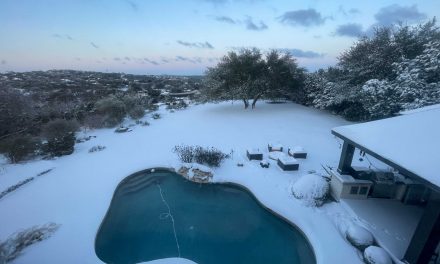“Drawing – that’s how you convey information to people,” said award-winning architect Lane Duncan, his eyes twinkling behind thick lenses, as he began his introduction to attendees of the Carlos Museum’s “Drawing From the Past” event on Jan. 18.
“It’s not what somebody else sees, but what it means to me,” Duncan said.
At Friday night’s “Sketch the Classics” session in the reception hall of the Michael C. Carlos Museum, he inspired amateur and experienced artists alike with his lecture on the importance of utilizing light and contrast in works of graphite, charcoal and watercolor.
Duncan is a man with many titles.
He is a Georgia Tech alum and watercolor instructor; has served as a design consultant for Green Habitats Foundation Inc., a non-profit sustainable building research organization; pioneered sustainable building techniques for a private Dewees Island, SC residential project and has received numerous accolades from the American Institute of Architecture.
As he speaks at the museum’s event, plaster casts of ancient Greek sculptures, incorporated into the design of the public space by Carlos Museum architect Michael Graves, adorn the walls of the dimly lit room, their contours sharpened under strategically placed spotlights.
Around two dozen attendees – a diverse mix of couples, friends and students – watched as Duncan began his demonstration. Some nursed cups of the white wine offered at the entrance. Others squinted and leaned forward in their seats while the image on Duncan’s easel quickly came to resemble the cast of a lion head perched at the upper-right corner of the room.
The original lion head, a waterspout from the Temple of Zeus in Olympia, dates back to 460 BCE and is currently displayed at the Olympia Museum in Elis, Greece.
Duncan finished his speech by revealing his sketch and handing out samples of his own work in watercolor.
Though the Jan. 18 session focused on graphite and charcoal, the following “Drawing From the Past” events on Feb. 8 and Mar. 1 will concentrate on the more difficult medium, Duncan said.
“In watercolor, all that you have is the white of the paper,” Duncan said. “That’s the lightest thing. You have to think ahead.”
As the attendees pass around Duncan’s washes of hazy skies and vibrant, Georgia O’Keeffe-reminiscent geraniums, Elizabeth Hornor, program director, encourages everyone to find something in the room to draw.
Chantrell Lowe, a program coordinator at Emory’s general medical education office, settles before the cast of an ionic column capital, the original of which dates back to c. 421-405 BCE.
A fine arts minor at Spelman College, Lowe draws with charcoal when she has spare time as she juggles her work and her son’s various activities.
“I try to do a little bit [of drawing] once a week, and this provides a great opportunity,” she said.
At the other end of the room, Fayette County High School art teacher Lori Thomas treated herself to a little bag of Hershey’s kisses while she carefully traced the ornate details of a Corinthian column capital.
At Fayette, Thomas has been teaching drawing, painting and ceramics for 13 years.
At the Carlos Museum, she and several others nodded to Duncan’s advice and glowed at his praise as he ambled from artist to artist across the room.
“Try to stay away from the tip of the pencil,” he suggested to a woman sketching a lion head waterspout similar to the subject of his demonstration.
One man knelt on the carpet, his eyes darting from the sketch pad resting on his chair to the cast of an ionic column capital taken from the interior of the Temple of Apollo at Bassai, Greece.
Duncan, whose upcoming projects include a show in Paris this fall, promises a scintillating lesson in watercolors for the event’s next two dates.
“I’m going to show them how to do a basic wash,” he said, as well as teach them “the technique of applying the paint, which can be very expressive.”
Both skilled and aspiring artists are welcome to capture the beauty of the Carlos Museum at the events they offer next on Feb. 8 and Mar 1..
– Contact Lydia O’Neal at
lmoneal@emory.edu
The Emory Wheel was founded in 1919 and is currently the only independent, student-run newspaper of Emory University. The Wheel publishes weekly on Wednesdays during the academic year, except during University holidays and scheduled publication intermissions.
The Wheel is financially and editorially independent from the University. All of its content is generated by the Wheel’s more than 100 student staff members and contributing writers, and its printing costs are covered by profits from self-generated advertising sales.



